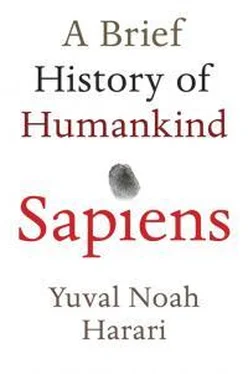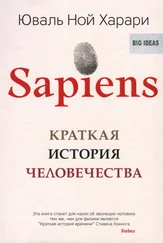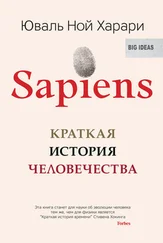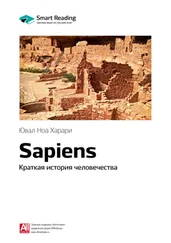As more and more things were written, and particularly as administrative archives grew to huge proportions, new problems appeared. Information stored in a persons brain is easy to retrieve. My brain stores billions of bits of data, yet I can quickly, almost instantaneously, recall the name of Italy’s capital, immediately afterwards recollect what I did on 11 September 2001, and then reconstruct the route leading from my house to the Hebrew University in Jerusalem. Exactly how the brain does it remains a mystery, but we all know that the brain’s retrieval system is amazingly efficient, except when you are trying to remember where you put your car keys.
How, though, do you find and retrieve information stored on quipu cords or clay tablets? If you have just ten tablets or a hundred tablets, it’s not a problem. But what if you have accumulated thousands of them, as did one of Hammurabi’s contemporaries, King Zimrilim of Mari?
Imagine for a moment that it’s 1776 BC. Two Marians are quarrelling over possession of a wheat field. Jacob insists that he bought the field from Esau thirty years ago. Esau retorts that he in fact rented the field to Jacob for a term of thirty years, and that now, the term being up, he intends to reclaim it. They shout and wrangle and start pushing one another before they realise that they can resolve their dispute by going to the royal archive, where are housed the deeds and bills of sale that apply to all the kingdom’s real estate. Upon arriving at the archive they are shuttled from one official to the other. They wait through several herbal tea breaks, are told to come back tomorrow, and eventually are taken by a grumbling clerk to look for the relevant clay tablet. The clerk opens a door and leads them into a huge room lined, floor to ceiling, with thousands of clay tablets. No wonder the clerk is sour-faced. How is he supposed to locate the deed to the disputed wheat field written thirty years ago? Even if he finds it, how will he be able to cross-check to ensure that the one from thirty years ago is the latest document relating to the field in question? If he can’t find it, does that prove that Esau never sold or rented out the field? Or just that the document got lost, or turned to mush when some rain leaked into the archive?
Clearly, just imprinting a document in clay is not enough to guarantee efficient, accurate and convenient data processing. That requires methods of organisation like catalogues, methods of reproduction like photocopy machines, methods of rapid and accurate retrieval like computer algorithms, and pedantic (but hopefully cheerful) librarians who know how to use these tools.
Inventing such methods proved to be far more difficult than inventing writing. Many writing systems developed independently in cultures distant in time and place from each other. Every decade archaeologists discover another few forgotten scripts. Some of them might prove to be even older than the Sumerian scratches in clay. But most of them remain curiosities because those who invented them failed to invent efficient ways of cataloguing and retrieving data. What set apart Sumer, as well as pharaonic Egypt, ancient China and the Inca Empire, is that these cultures developed good techniques of archiving, cataloguing and retrieving written records. They also invested in schools for scribes, clerks, librarians and accountants.
A writing exercise from a school in ancient Mesopotamia discovered by modern archaeologists gives us a glimpse into the lives of these students, some 4,000 years ago:
I went in and sat down, and my teacher read my tablet. He said, ‘There’s something missing!’
And he caned me.
One of the people in charge said, ‘Why did you open your mouth without my permission?’
And he caned me.
The one in charge of rules said, ‘Why did you get up without my permission?’
And he caned me.
The gatekeeper said, ‘Why are you going out without my permission?’ And he caned me.
The keeper of the beer jug said, ‘Why did you get some without my permission?’
And he caned me.
The Sumerian teacher said, ‘Why did you speak Akkadian?’ *
And he caned me.
My teacher said, ‘Your handwriting is no good!’
And he caned me. 4
Ancient scribes learned not merely to read and write, but also to use catalogues, dictionaries, calendars, forms and tables. They studied and internalised techniques of cataloguing, retrieving and processing information very different from those used by the brain. In the brain, all data is freely associated. When I go with my spouse to sign on a mortgage for our new home, I am reminded of the first place we lived together, which reminds me of our honeymoon in New Orleans, which reminds me of alligators, which remind me of dragons, which remind me of The Ring of the Nibelungen , and suddenly, before I know it, there I am humming the Siegfried leitmotif to a puzzled bank clerk. In bureaucracy, things must be kept apart. There is one drawer for home mortgages, another for marriage certificates, a third for tax registers, and a fourth for lawsuits. Otherwise, how can you find anything? Things that belong in more than one drawer, like Wagnerian music dramas (do I file them under ‘music’, ‘theatre’, or perhaps invent a new category altogether?), are a terrible headache. So one is forever adding, deleting and rearranging drawers.
In order to function, the people who operate such a system of drawers must be reprogrammed to stop thinking as humans and to start thinking as clerks and accountants. As everyone from ancient times till today knows, clerks and accountants think in a non-human fashion. They think like filing cabinets. This is not their fault. If they don’t think that way their drawers will all get mixed up and they won’t be able to provide the services their government, company or organisation requires. The most important impact of script on human history is precisely this: it has gradually changed the way humans think and view the world. Free association and holistic thought have given way to compartmentalisation and bureaucracy.
The Language of Numbers
As the centuries passed, bureaucratic methods of data processing grew ever more different from the way humans naturally think – and ever more important. A critical step was made sometime before the ninth century AD, when a new partial script was invented, one that could store and process mathematical data with unprecedented efficiency. This partial script was composed of ten signs, representing the numbers from 0 to 9. Confusingly, these signs are known as Arabic numerals even though they were first invented by the Hindus (even more confusingly, modern Arabs use a set of digits that look quite different from Western ones). But the Arabs get the credit because when they invaded India they encountered the system, understood its usefulness, refined it, and spread it through the Middle East and then to Europe. When several other signs were later added to the Arab numerals (such as the signs for addition, subtraction and multiplication), the basis of modern mathematical notation came into being.
Although this system of writing remains a partial script, it has become the world’s dominant language. Almost all states, companies, organisations and institutions – whether they speak Arabic, Hindi, English or Norwegian – use mathematical script to record and process data. Every piece of information that can be translated into mathematical script is stored, spread and processed with mind-boggling speed and efficiency.
A person who wishes to influence the decisions of governments, organisations and companies must therefore learn to speak in numbers. Experts do their best to translate even ideas such as ‘poverty’, ‘happiness’ and ‘honesty’ into numbers (‘the poverty line’, ‘subjective well-being levels’, ‘credit rating’). Entire fields of knowledge, such as physics and engineering, have already lost almost all touch with the spoken human language, and are maintained solely by mathematical script.
Читать дальше



![Юваль Ной Харари - Sapiens. Краткая история человечества [litres]](/books/34310/yuval-noj-harari-sapiens-kratkaya-istoriya-cheloveche-thumb.webp)





![Юваль Ной Харари - 21 урок для XXI века [Версия с комментированными отличиями перевода]](/books/412481/yuval-noj-harari-21-urok-dlya-xxi-veka-versiya-s-ko-thumb.webp)


